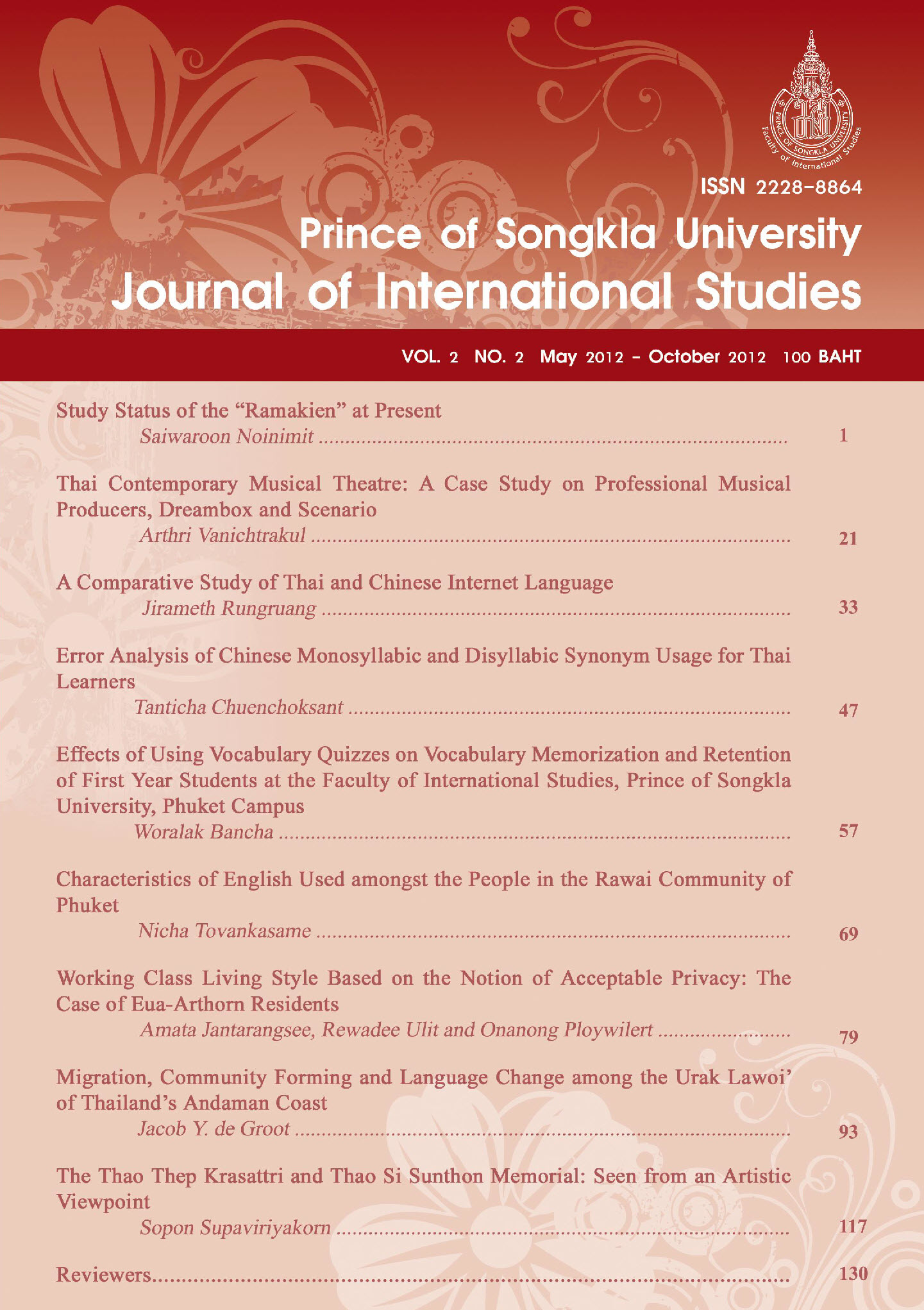Working Class Living Style Based on the Notion of Acceptable Privacy: The case of Eua-Arthorn residents
Main Article Content
Abstract
This qualitative study aims to explore the unique living style of working class people by comparing with middle class living style and to illustrate how the working class lives with family members in limited spaces via the concept of privacy. Twelve in-depth interviews, supplemented with observation, were conducted with the working class people in the Eua Arthorn flats with each household consisting of two to seven members. Findings revealed that, unlike middle class people, the working class in the Eua-Arthorn community had a unique living style concerning family circle, well-being, and practicality. Therefore, domestic life depended on other members and was based on 'practical privacy' which refers to the ability to live with some annoyances. This can be seen in the flexible boundary rule, the sharing habit in households, and the strategy for maintaining temporary privacy
Article Details
Statements and opinions expressed in articles herein are those of the authors and do not necessarily reflect the position of the editors or publisher.
Article, information, text, image, etc. which are published in Journal of International Studies, belong to Journal of International Studies. If anybody or any organization would like to use part or whole of them, they must receive written permission from Journal of International Studies before usage.
References
Thomson Wadsworth. Bate, A. (1964). Privacy- a useful concept? Social Force, 42(4), 429-434. Boonsathorn, A. (2005). Perception of community service quality an expectation of
quality of life: A case study of residence in Bangchalong, Prachaniwes and Huamark Aur-Arthorn housing project(nha). Proceeding from The first national conference on Demography. , Twin Tower hotel, Bangkok: Thai Population Association.
(Originated in Thai) Chiengthong, S. and Wittayasomboon, I. (2009). Little people in the big city. Bangkok:
Community Organizations Development Institute. Denpaiboon, C., Horayangkura, V., and Takada, M. (2005). Impact of affordable housing
development for low-income group on urban development: A case of Bagn Eur-Athorn project, Rangsit Klong 3. (Term project). Bangkok: The Thai Research Fund.
(Originated in Thai) Gans, H. (1962). The urban villagers: Group and class in the life of Italian-Americans.
New York: The free press.
สแกนด้วย CamScanner
( 92 )
Heidegger, M. (1962). Being and Time. Oxford: Blackwell. Johnson, E. (1952). Family privacy in Multi-Unit Dwelling. Marriage and Family Living,
14(3), 219-225. Merleau-Ponty, M. (1962). Phenomenology of Perception. London: Routledge and Kegan
Paul. Moore, M. (2003). Privacy: Its meaning and value. American Philosophical Quarterly,
40(3), 215-227. Rachels, J. (1975). Why privacy is important. Philosophy and Public Affairs, 4(4),
323-333. Riley, T. (1999). The un-private house. New York: Museum of Modern Arts. Savage, M., Bagnall, G. and Longhurst, B. et al., (2005). Globalization and Belonging.
London: Sage. Schwartz, B. (1986). The Social psychology of privacy. The American Journal of
Sociology, 73(6), 741-752. Suppawittaya, A. (2003). Assessment of the Eua-Arthorn Housing project in the
ownership distribution for low income people. (Term project). Nida, Bangkok.
(Originated in Thai) Urbanization and the poor. (2009). GH Bank Housing Journal, 3(9), 85-88. Warren, S., and Brandeis, L. (1890). The right to privacy. Harvard Law Review, 4(5),
193-220. Wilson, J. (2006). Private places. London: Aurum Press.


